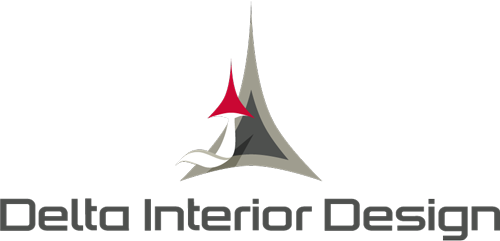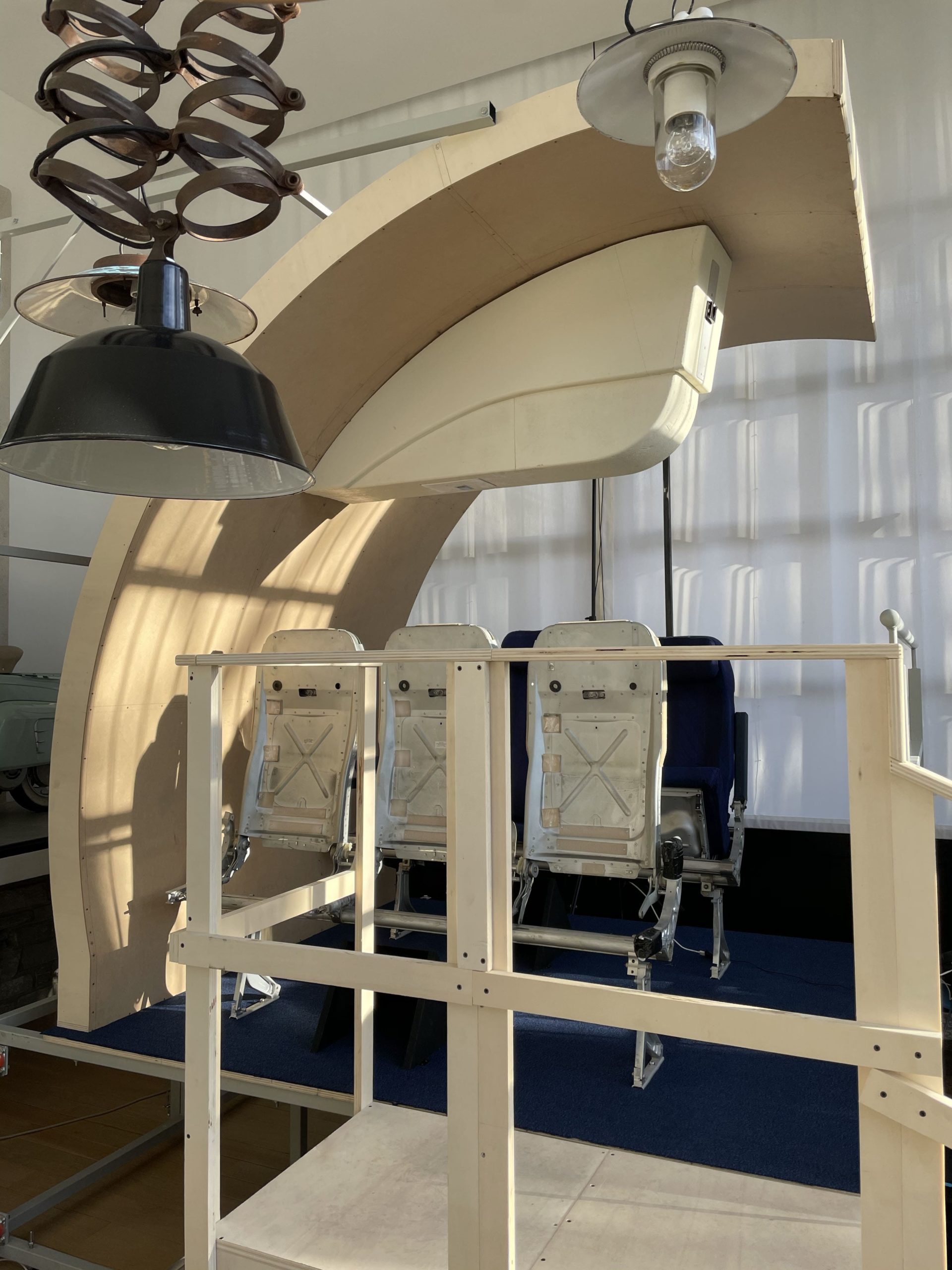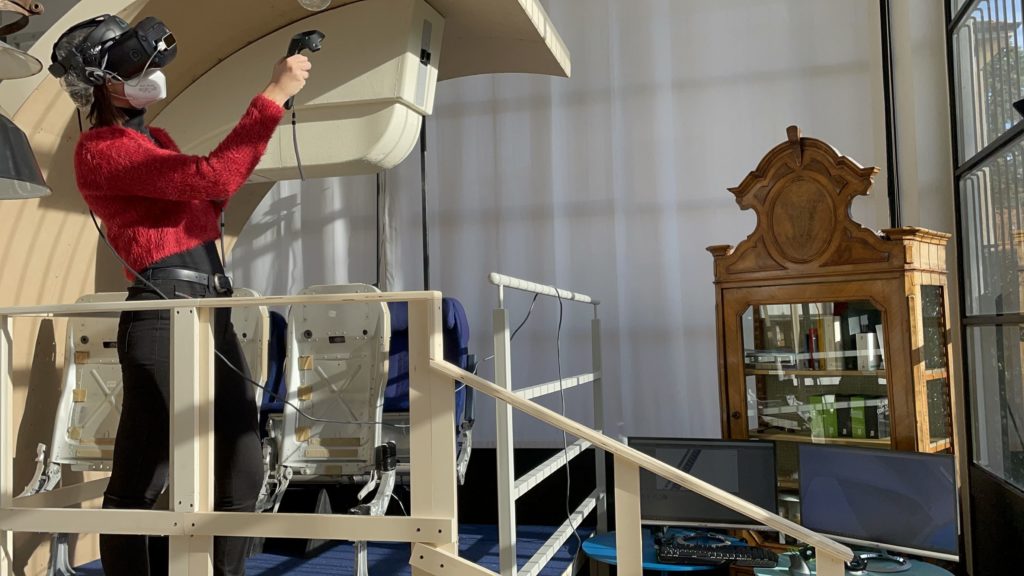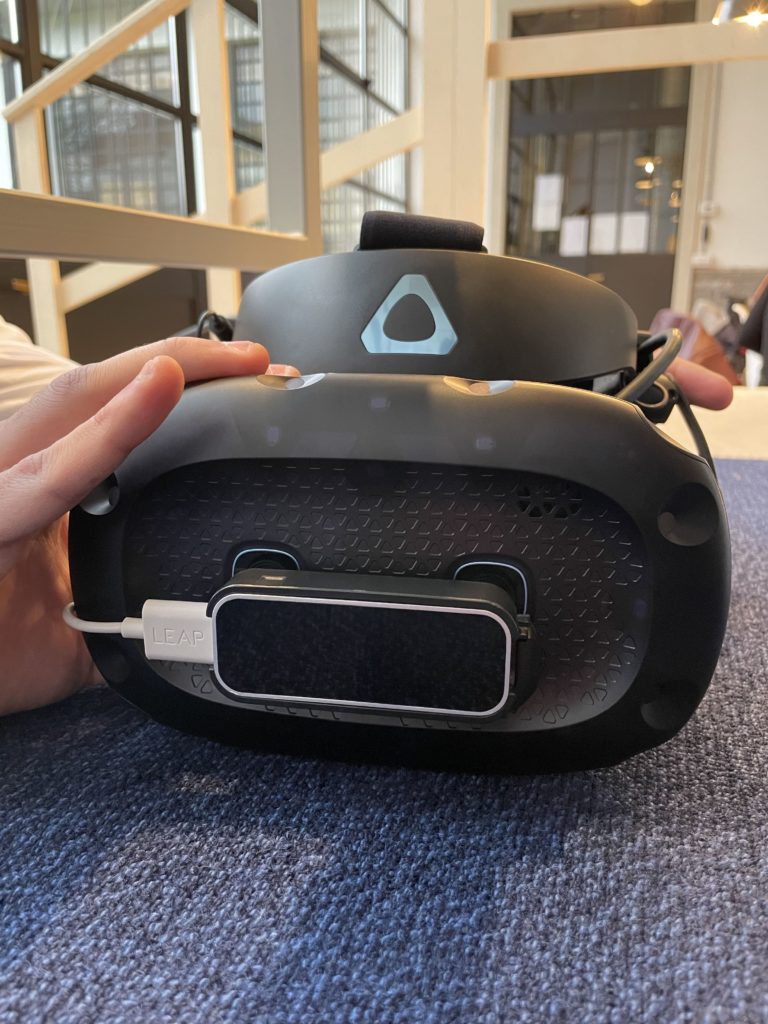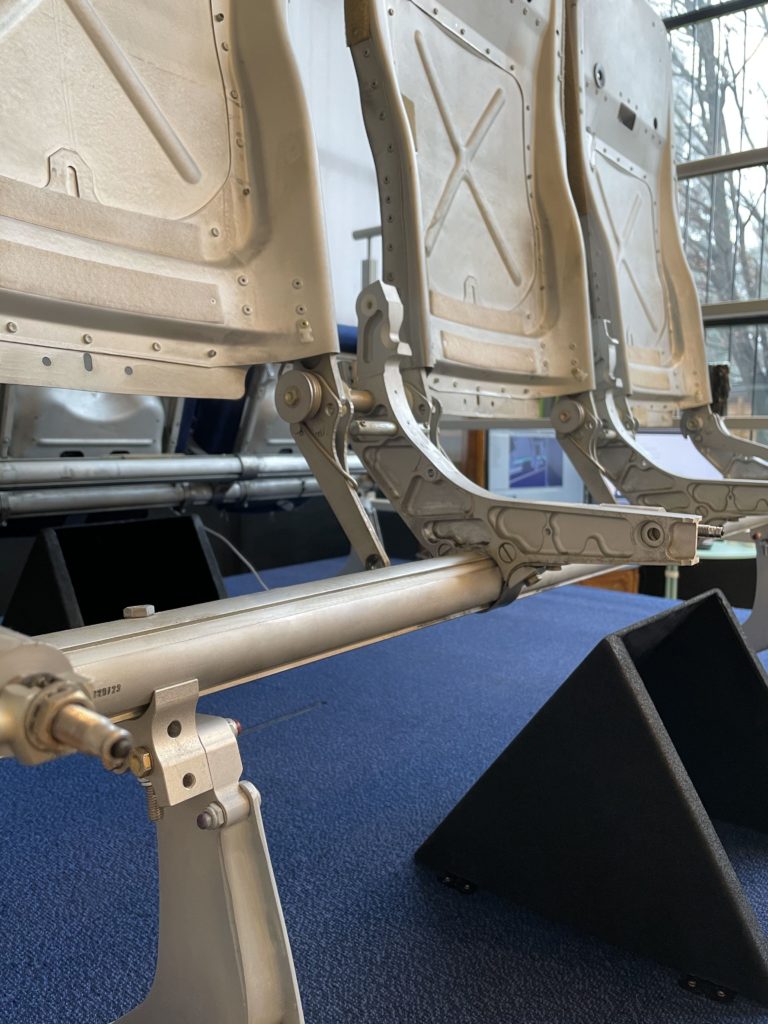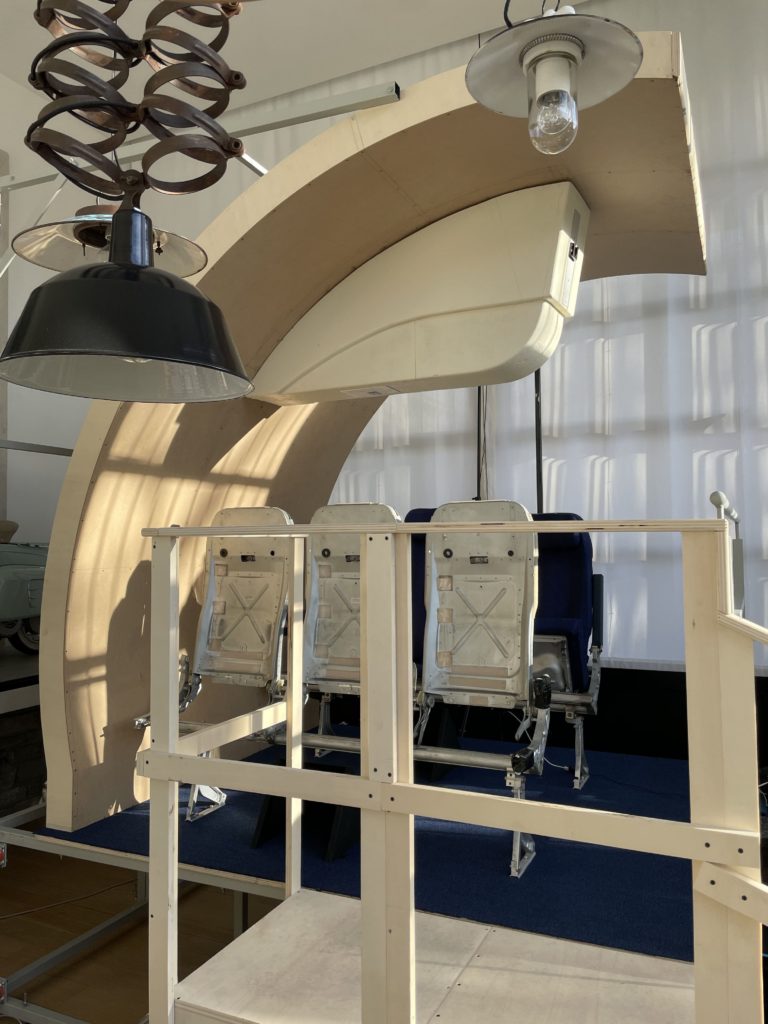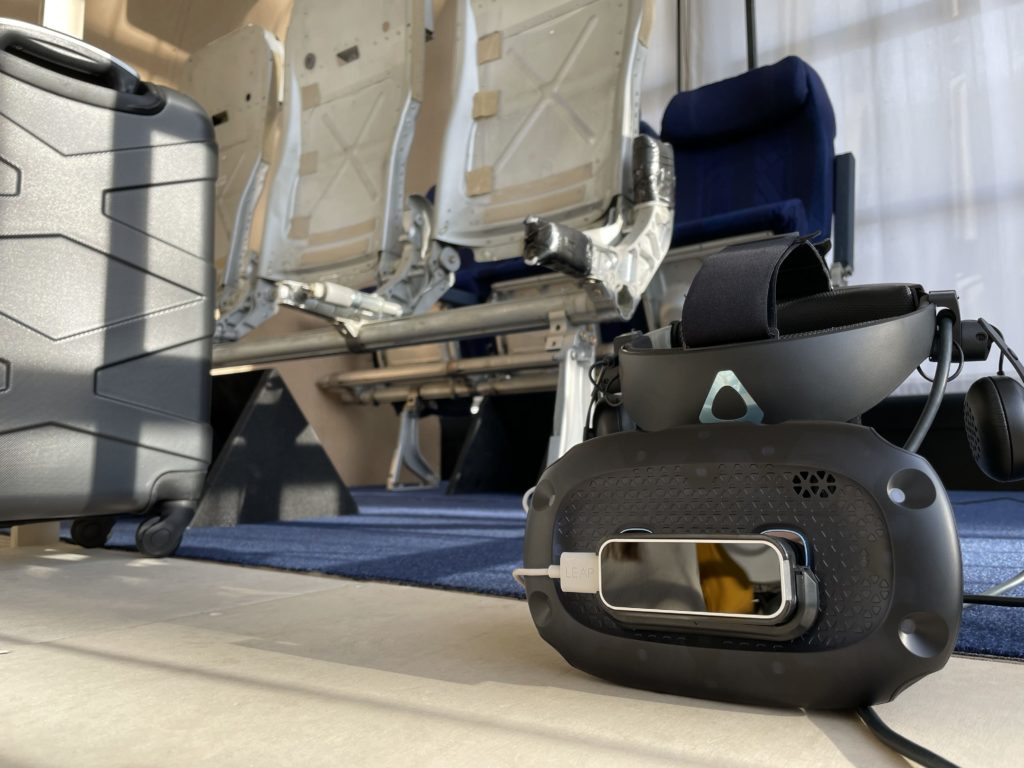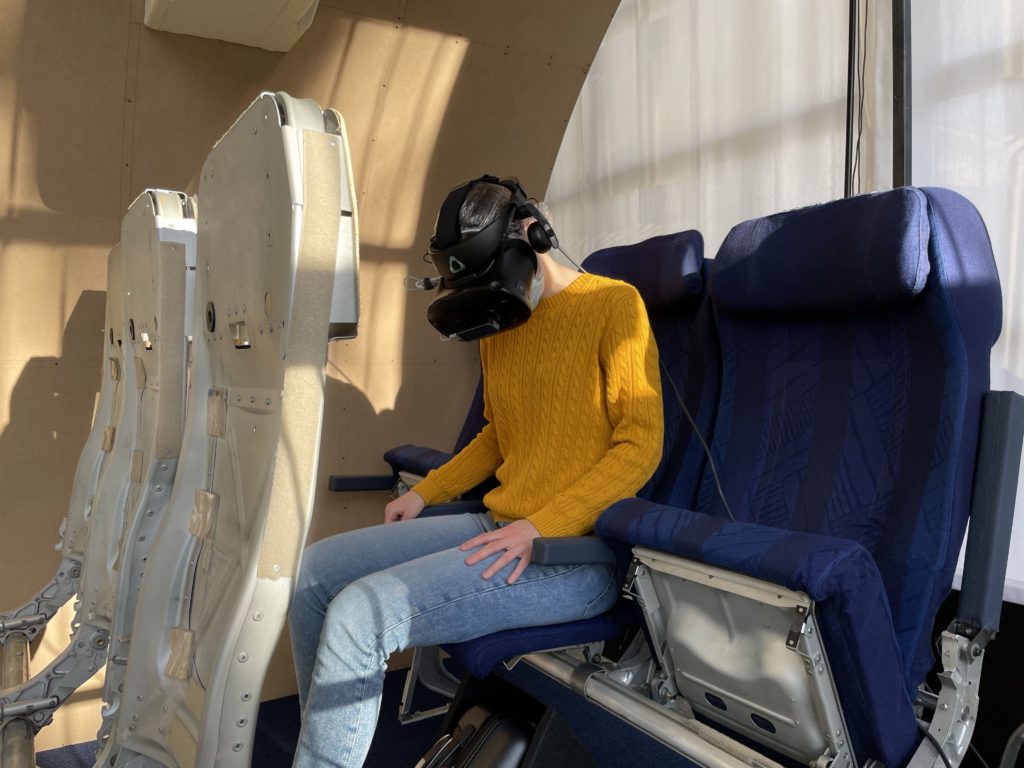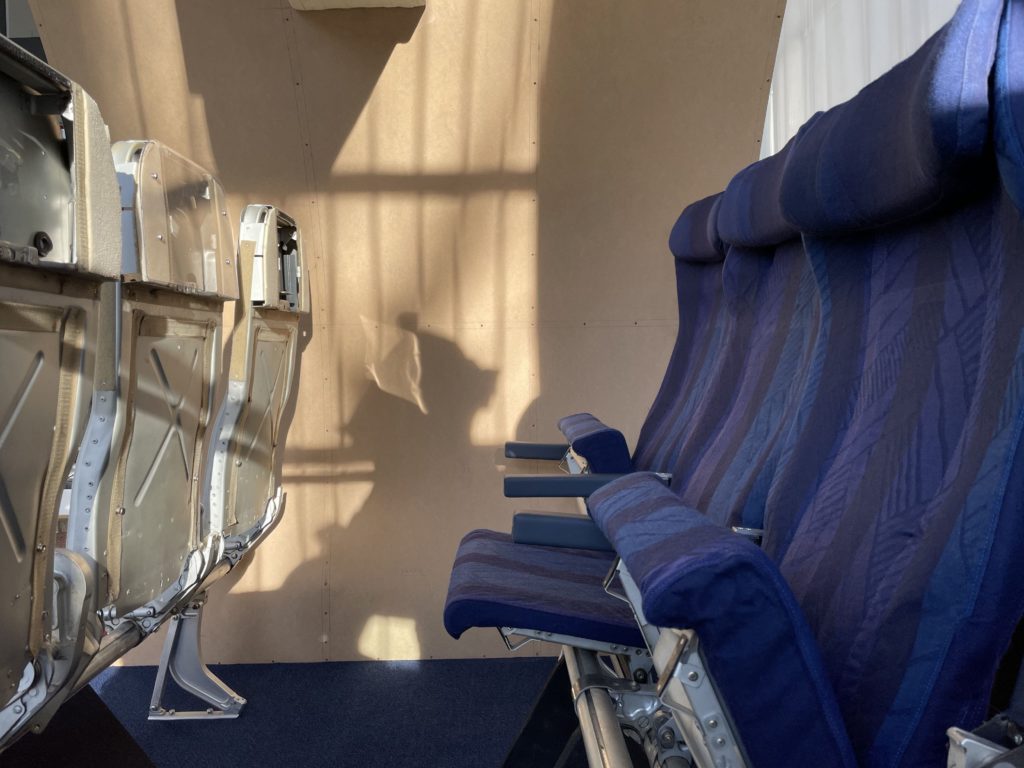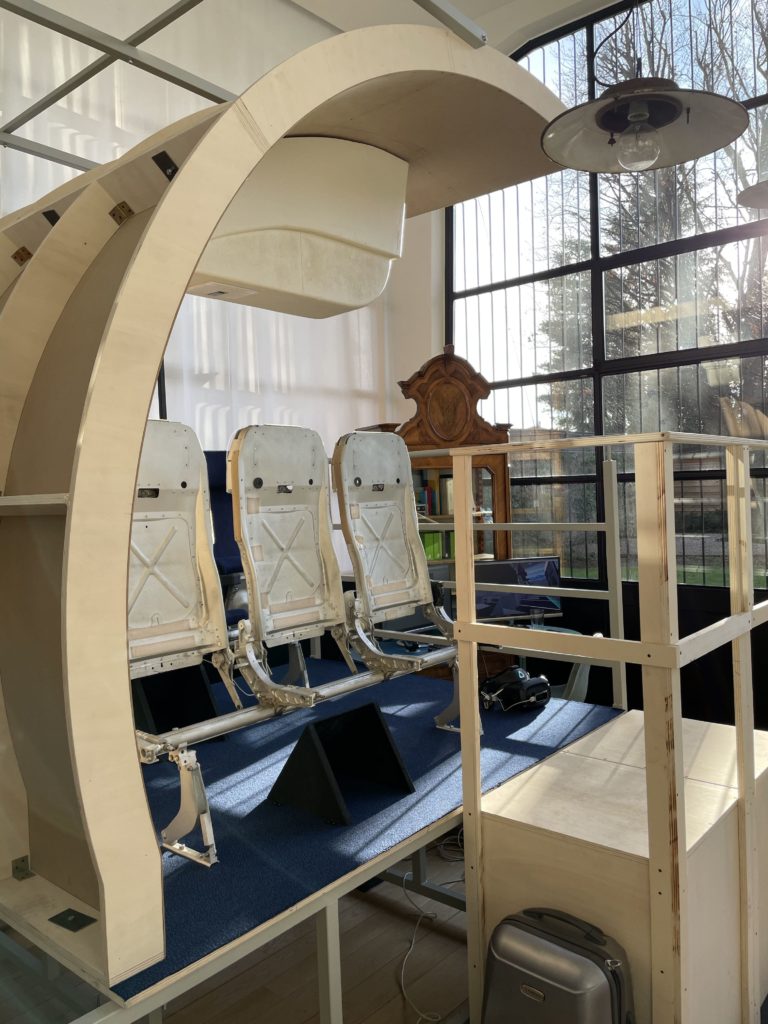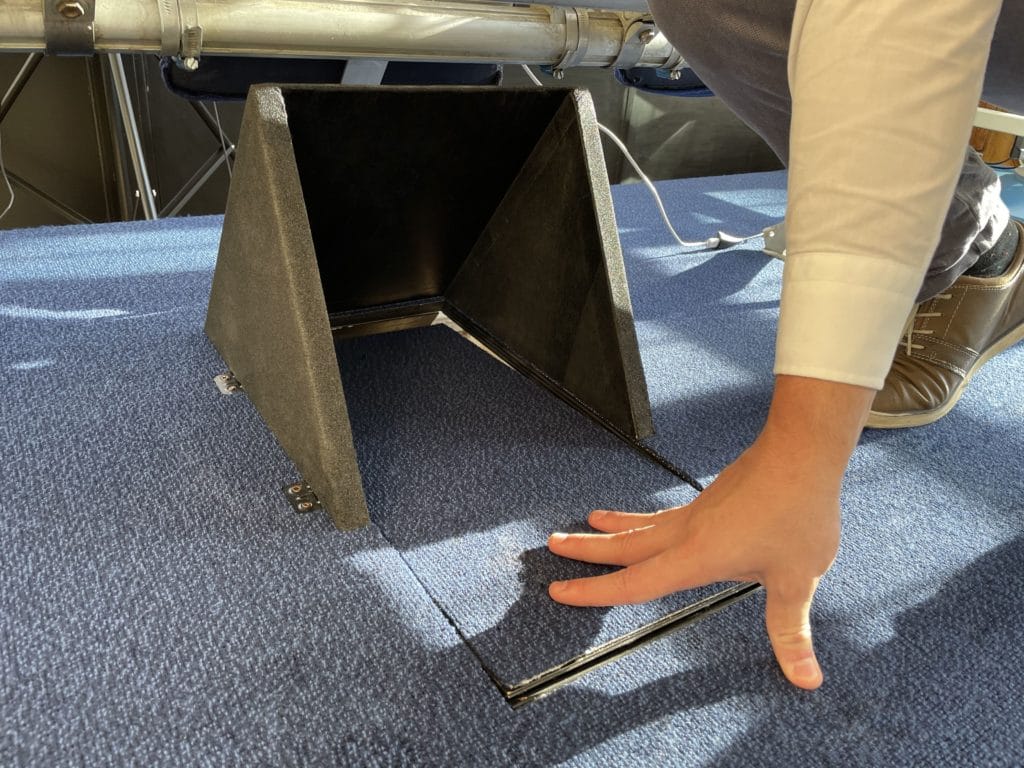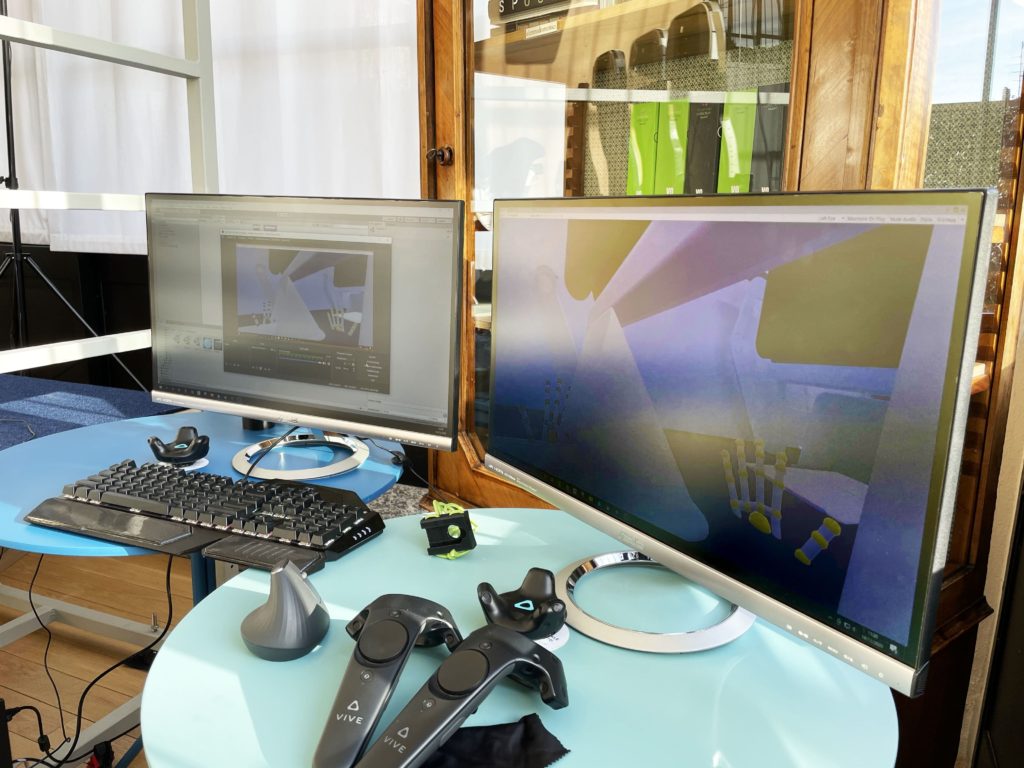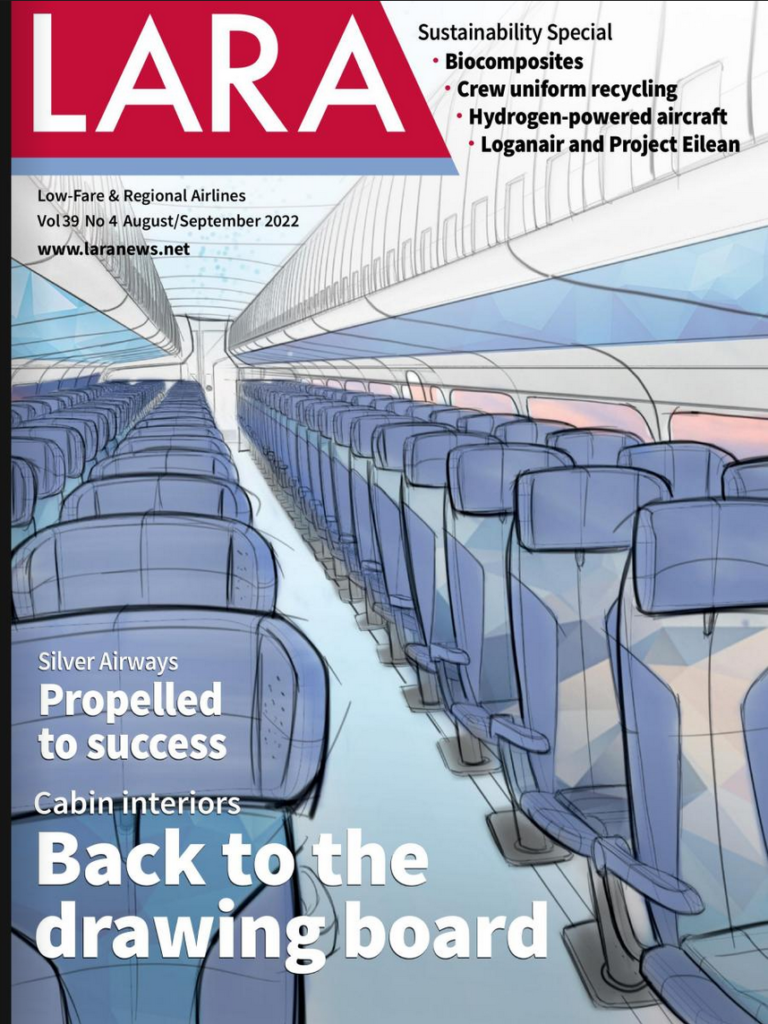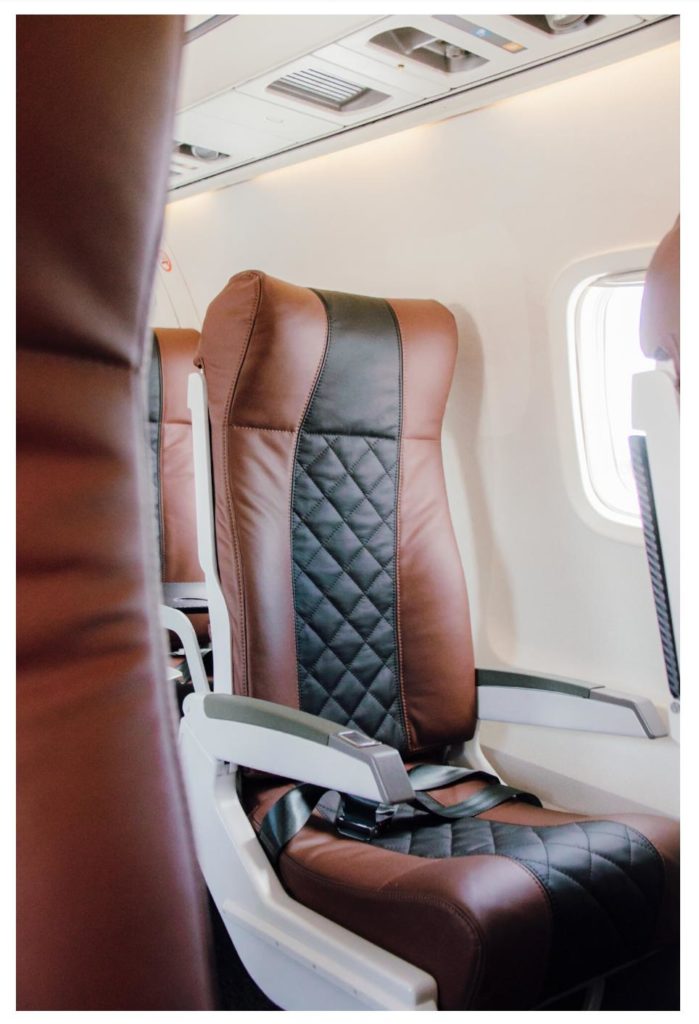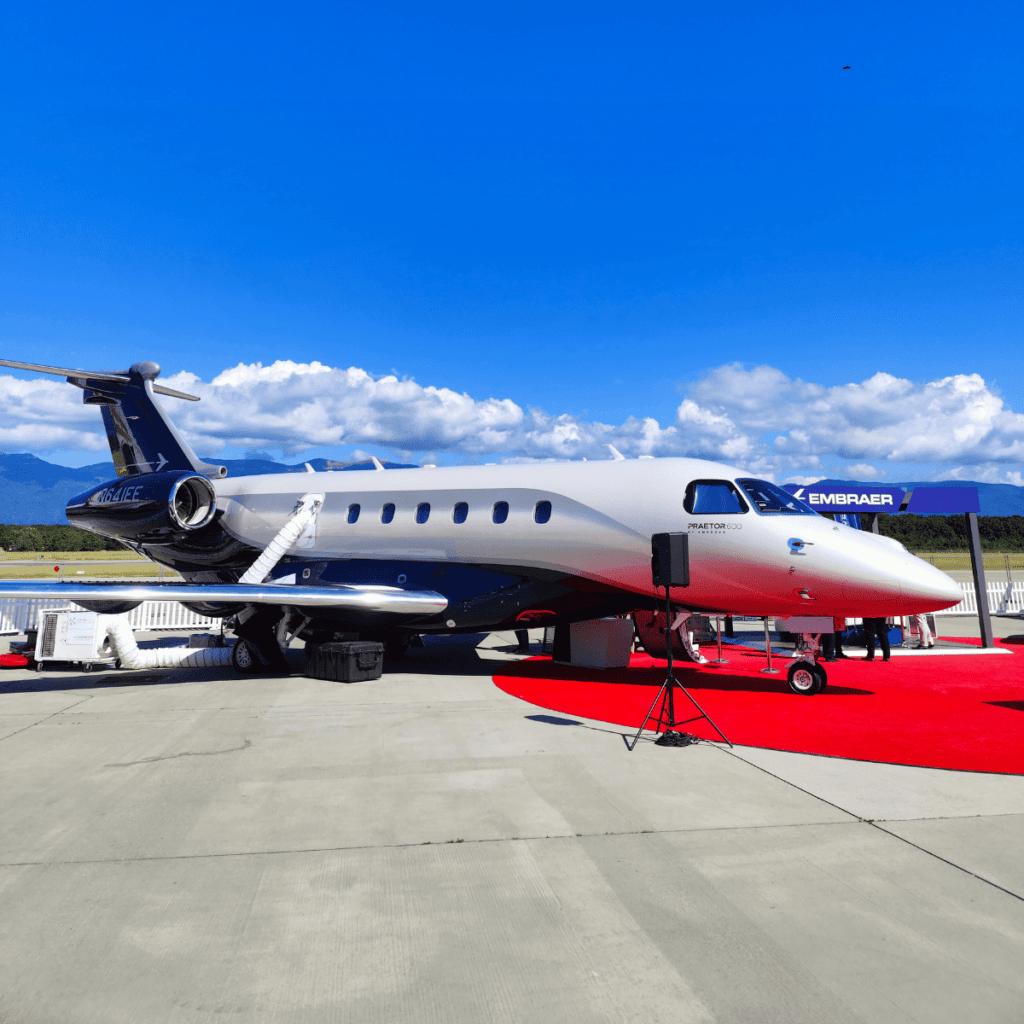Testing time for the RATIOS project, which as part of the European Clean Sky 2 program saw three Italian companies completely rethink aircraft cabins. Delta Interior Design, a Lecco company specialized in the production of jet furnishings, Studio Volpi, an established design company from Varese, and LEONARDO Aircraft Division as leader of the integrated technology.
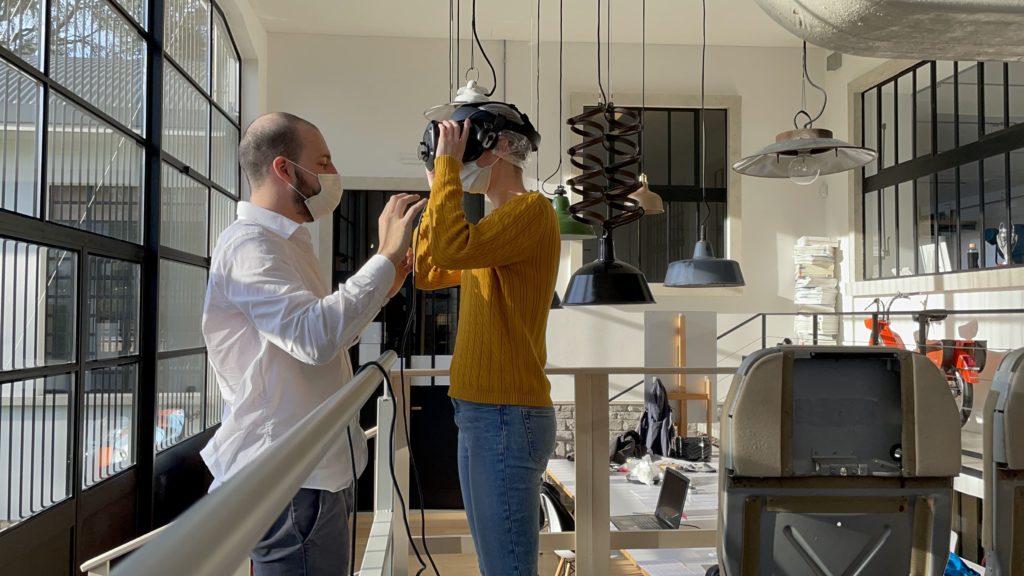
Demonstration for innovative regional aircraft the EU project contributes to, have combined their efforts to propose solutions ranging from a different arrangement of the overhead luggage compartment to the possibility of stowing hold luggage under the seats, to the creation of toilets in which there is no need to touch any surface, in order to limit the spread of pathogens. After the design phase, Delta Interior Design created a mock-up of the cabin that became a virtual scenario installed at Studio Volpi, where a test and simulation session was then conducted involving potential passengers in an immersive test to assess the level of perception of the innovated environment and therefore be able to validate the concept and design features of the final cabin.
The session involved the participation of a group of people representing different categories of passengers to ensure that the results of the project met and realized the desired expectations. Wearing a Virtual Reality Headset and motion sensors, the testers, therefore, played a crucial role in the development of the project, especially in terms of demonstrating the consistency, functionality and completeness of the final design concept with respect to the defined pain points and the needs of the end customer of short-haul flights. The RATIOS Team also involved a group of psychologists from the Catholic University of Milan supervised by Andrea Gaggioli, professor of General Psychology, who has been collaborating for years with the implementation of experimental protocols focused on topics such as User Experience and Virtual Reality, and who performed an integrated assessment of the emotional usability of the user experience following a rigorous experimental protocol. Psychologists from the Catholic University of Milan were also responsible for the implementation of the UX-VR assessment protocol through the administration of UX assessment measures and statistical analysis methods. The virtual test session included various in-flight situations and passenger activities with the new cabin features; some of these have been simulated in mixed reality, that is, combining virtual reality scenarios with interaction with physical prototypes. This integration made it possible to fully evaluate the flight experience by immersing the passenger in a virtual scenario, allowing him to live an engaging and realistic experience.
Also crucial was the ability for the RATIOS designers to receive important feedback on the cabin design and experience, allowing them to make changes that will improve passenger comfort and well-being. The physical mock-up of the cabin set up at Studio Volpi’s headquartier was equipped with a control desk for virtual reality and an additional space to carry out questionnaires and assessments. Due to the Covid-19 contingency, for compliance with the health and behavioural rules imposed, the technical managers of both project partners, as well as part of the group of psychologists were forced to part and attend the test remotely using an audio link and online video.
Before the rehearsal each participant took a short training course on how to use the equipment, then was taken to the starting point located on the physical model of the cabin, and asked to put on the VR headset to get started. In the first phase, each passenger made a visual exploration of the plane, then they were asked to place their luggage under the seat and personal effects in the overhead bin interacting with each component of the aircraft cabin. Finally, he was able to test access to the toilet. At the end the passengers had to make a comparative evaluation between the actual experience based on virtual reality and a remembered one.
The sample of passengers was made up of 31 adults (of which about two thirds were males), who voluntarily took part in the research. From the point of view of education, 31% of them had a first level master, 20.6% a second level master and 44.8% a doctorate. They all had previous flying experiences and most also had work or play-related VR experiences.
The technical resources used for the tests included, in addition to the full-scale physical model of the cabin, also the virtual three-dimensional model that reproduced the innovative concepts of the cabin interiors. The candidates wore the Vive Cosmos virtual viewer, chosen because it meets the project requirements and is compatible with the sensors installed on the physical mock-up, then picked up the consoles and then interacted with physical and computer environments. The chosen VR headset was the Vive Cosmos professional, which meets the requirements of the aircraft design and is compatible with the sensors applied to the physical mock-up. The Vive Tracker system was used to track people’s movements by transposing it into virtual reality, which allows you to combine physical objects with their virtual counterparts. The placement and quantity of sensors depends on the number of physical interactions needed with the prototype. A single tracker was attached to the suitcase, on each seat armrest, and one to the headrest, to the cushion, on the side of the overhead container for model matching purposes.
Finally, Unity 3D software was used, considered the best and most suitable graphics engine on the market. Not only futuristic ideas, but new concepts validated by real experiences, even if only in the virtual world, by passengers that will in the future travel in much more comfortable cabins.
